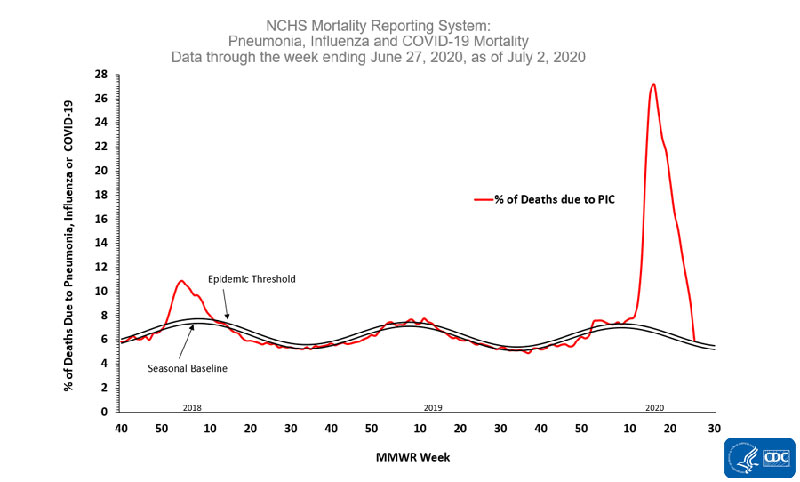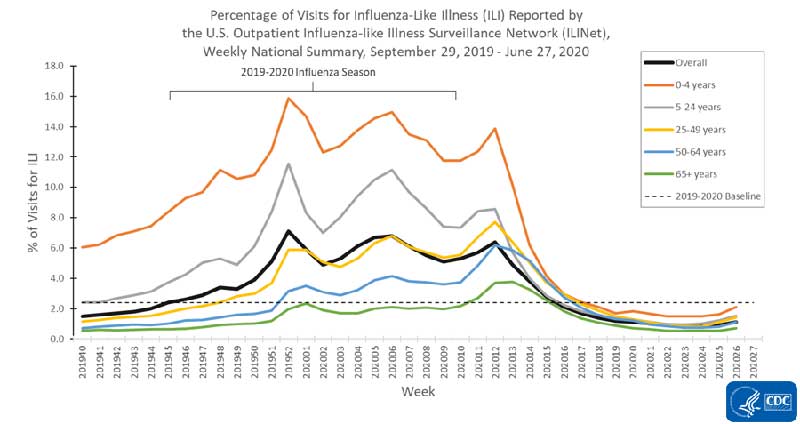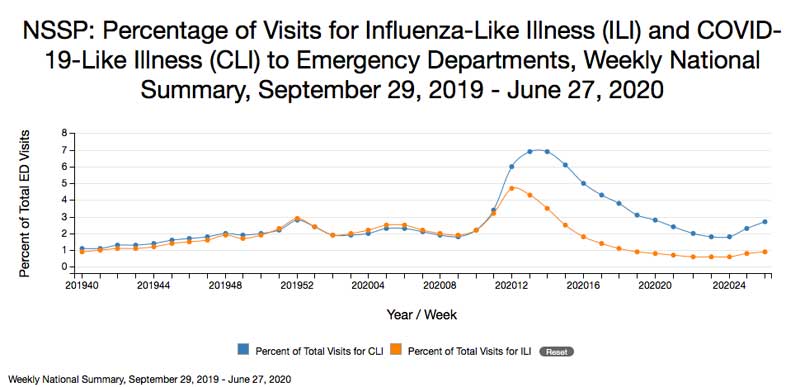More Evidence Ventilators Deadly for COVID Patients
Mechanical ventilators may cause more harm than good in a significant number of COVID-19 patients, which is a conundrum for physicians used to treating severe hypoxia — low blood oxygen — with such machines. In some cases, COVID-19 patients have oxygen levels that are so low they’re considered “incompatible with life,” yet the patients have no shortness of breath or labored breathing.1
The phenomenon has been dubbed “happy hypoxia,” a term medically known as silent hypoxemia, in which COVID-19 patients may have blood-oxygen saturation levels as low as 50% — normal blood-oxygen saturation is 95% or higher.
“There is a mismatch [between] what we see on the monitor and what the patient looks like in front of us,” Dr. Reuben Strayer, an emergency physician at Maimonides Medical Center in New York City, told Science.2
Typically, if a person has low oxygen saturation, they’ll be treated with breathing support in the form of continuous positive airway pressure, or CPAP, masks, which are often used to treat severe sleep apnea. CPAP devices regulate the pressure and level of oxygen that reaches the lungs,3 using mild air pressure to keep breathing airways open.
Bilevel positive airway pressure ventilators (BiPAP), another noninvasive device to supply pressurized air into the airways, may also be used. If oxygen saturation doesn’t increase, or in cases of acute respiratory distress syndrome (ARDS), a lung condition that’s common in severe COVID-19 cases, and which causes low blood oxygen and fluid buildup in the lungs, mechanical ventilation is often recommended.
However, research is revealing that COVID-19 patients placed on ventilators often don’t survive, leading experts to suggest the machines are being overused and patients may do better with less invasive treatments.
Over 50% of Mechanically Ventilated COVID-19 Patients Die
“Mechanical ventilation is the main supportive treatment for critically ill patients” infected with novel coronavirus 2019 (COVID-19), according to a February 2020 study published in The Lancet Respiratory Medicine.4 Yet, it’s quickly become apparent that invasively ventilated COVID-19 patients often don’t make it, and have a very high case fatality rate of more than 50%.5
The practice is widespread, nonetheless. In a case series of 1,300 critically ill patients admitted to intensive care units (ICUs) in Lombardy, Italy, 88% received invasive ventilation, but the mortality rate was still 26%.6
Further, in a JAMA study that included 5,700 patients hospitalized with COVID-19 in the New York City area between March 1, 2020, and April 4, 2020, mortality rates for those who received mechanical ventilation ranged from 76.4% to 97.2%, depending on age.7
Similarly, in a study of 24 COVID-19 patients admitted to Seattle-area ICUs, 75% received mechanical ventilation and, overall, half of the patients died between one and 18 days after being admitted.8
There are many reasons why those on ventilators have a high risk of mortality, including being more severely ill to begin with. However, given the poor outcomes, some physicians are now trying to keep patients off of ventilators as much as possible by using less-invasive alternative measures.
“Contrary to the impression that if extremely ill patients with Covid-19 are treated with ventilators they will live and if they are not, they will die, the reality is far different,” Dr. Muriel Gillick of Harvard Medical School told STAT news.9
There are risks inherent to mechanical ventilation itself, including impairment to the lung’s air sacs from high levels of oxygen and lung damage caused by the high pressure used by the machines. Long-term sedation from the intubation is another risk, one that’s difficult for some patients, especially the elderly, to bounce back from.
In cases of ARDS, the lung’s air sacs may be filled with a yellow fluid that has a “gummy” texture, making oxygen transfer from the lungs to the blood difficult, even with mechanical ventilation.
According to Gillick, “We need to ask, are we using ventilators in a way that makes sense for other diseases but not for this one? Instead of asking how do we ration a scarce resource [ventilators], we should be asking how do we best treat this disease?”10
Less Invasive Nasal Cannula May Work Better
In some cases, there’s evidence that a far less invasive nasal cannula may be sufficient to help COVID-19 patients. In a study of COVID-19 patients in China, most of the critically ill patients received high-flow nasal cannula (HFNC) oxygen therapy as a first-line treatment, and it was sufficient in the majority of cases.11
Although 41% did eventually require more intensive breathing support, noninvasive ventilation, such as BiPAP, was offered next and again succeeded in keeping most of the patients off mechanical ventilators. Ultimately, only four of the 27 patients with severe acute respiratory failure were intubated.
According to some physicians, COVID-19 patients display symptoms more in line with altitude sickness than pneumonia, such as having low levels of carbon dioxide in the blood, despite low oxygen, calling mechanical ventilation into further question.
Speaking with STAT, Dr. Scott Weingart, a critical care physician in New York and host of the “EMCrit” podcast, said, “we’ve had a number of people who improved and got off CPAP or high flow [nasal cannulas] who would have been tubed 100 out of 100 times in the past.”
But, he said, automatically putting patients on mechanical ventilators “is really bad,” adding “… I think these patients do much, much worse on the ventilator … I would do everything in my power to avoid intubating patients.”12
Are There Two Types of COVID-19 Presentations?
An April 2020 article by Drs. Luciano Gattinoni and John Marini describes two different types of COVID-19 presentations, which they refer to as Type L and Type H.13 In Type L, patients have “low lung elastance (high compliance), lower lung weight as estimated by CT scan, and low response to PEEP [positive end-expiratory pressure].” Many patients become stabilized at this stage and do not deteriorate further.
However, in some cases symptoms closer to ARDS develop. This type of presentation is defined as Type H, and includes “high elastance (low compliance), higher lung weight, and high PEEP response.”
Importantly, while one type benefits from mechanical ventilation, the other does not. Dr. Roger Seheult discusses this paper, as well as the comparison of COVID-19 to high altitude pulmonary edema, or HAPE, in the MedCram video above, once again suggesting it may turn out that mechanical ventilators are inappropriate for a majority of patients.
‘Prevent the Vent’ Approach Yields Remarkable Results
Meanwhile, doctors at University of Chicago (UChicago) Medicine reported “truly remarkable” results using high-flow nasal cannulas in lieu of ventilators.14 In fact, 24 COVID-19 patients who were in respiratory distress were given HFNCs instead of ventilators. All “fared extremely well,” and only one required intubation 10 days later.
Dr. Michael O’Connor, director of critical care medicine, called the team’s success “truly remarkable. At one point, the department had 137 COVID-19 patients, but only 27 were on ventilators. “The medical staff has avoided mechanical ventilation on 40% of patients, and extubated 50% of those who needed ventilators, O’Connor said in a news release. “It’s a phenomenal number, because in Italy, the number of extubations was much lower.”15
The team has also been combining the use of HFNCs with prone positioning, another alternative treatment that’s shown promise for treating COVID-19. Lying in the prone (face down) position, in which your chest is down and your back is up, has been shown to improve outcomes in people with severe ARDS,16 and oxygenation tends to be significantly better among patients in the prone position compared to the supine (face up) position.17
A study of critically ill COVID-19 patients in China’s Jiangsu Province recommended the use of awake prone positioning, which, the researchers noted, “showed significant effects in improving oxygenation and pulmonary heterogeneity.”18
It’s also been suggested that the physiological changes that occur with prone positioning may be even more favorable in spontaneously breathing patients than in those who are intubated.
A 2003 study found, in fact, that the prone position led to a rapid increase in partial pressure of oxygen, or PaO2, which is a measure of how well oxygen moves from the lungs to the blood, among patients with respiratory failure.19 All of the patients in the study were able to avoid mechanical ventilation.
Dr. Thomas Spiegel, medical director of UChicago Medicine’s emergency department, said, “The proning and the high-flow nasal cannulas combined have brought patient oxygen levels from around 40% to 80% and 90%, so it’s been fascinating and wonderful to see.”20
The UChicago Medicine team is using an approach they’ve dubbed “prevent the vent,” which involves using mechanical ventilation only as a last resort. “Avoiding intubation is key,” Spiegel said. “Most of our colleagues around the city are not doing this, but I sure wish other ERs would take a look at this technique closely.”21
Hyperbaric Oxygen Therapy May Prevent Mechanical Ventilation
Hyperbaric oxygen therapy (HBOT) is another treatment adjunct being explored against severe COVID-19. It works by supplying 100% oxygen in a pressurized chamber, which allows your body to absorb oxygen directly into your tissues. Since there's no airflow being forced directly into the lungs, it doesn’t cause the lung damage that mechanical ventilation can.
Dr. Kelly Thibodeaux with Opelousas General Hospital in Louisiana, which has a hyperbaric center, called HBOT “a less invasive way to deliver oxygen that doesn't require sticking a tube down the trachea.”22
Thibodeaux and colleagues explained, “Once intubated, mortality increases exponentially.”23 They’ve been deploying off-label compassionate use of HBOT as an alternative for patients that would otherwise have required ventilation, with promising results. In a case series of five patients, “dramatic improvement” was seen with HBOT. According to the article:
“All the patients recovered without the need for mechanical ventilation. Following HBOT, oxygen saturation increased, tachypnea [rapid breathing] resolved and inflammatory markers fell.
At the time of writing, three of the five patients have been discharged from the hospital and two remain in stable condition … Most importantly, HBOT potentially prevented the need for mechanical ventilation.”24
Ongoing research will be needed to determine the best course of action for individual COVID-19 cases, but it appears that starting with the least invasive options is beneficial in the majority of cases, while an increasing number of physicians are advising against mechanical ventilation whenever possible.
from Articles https://ift.tt/3esFGSe
via IFTTT


